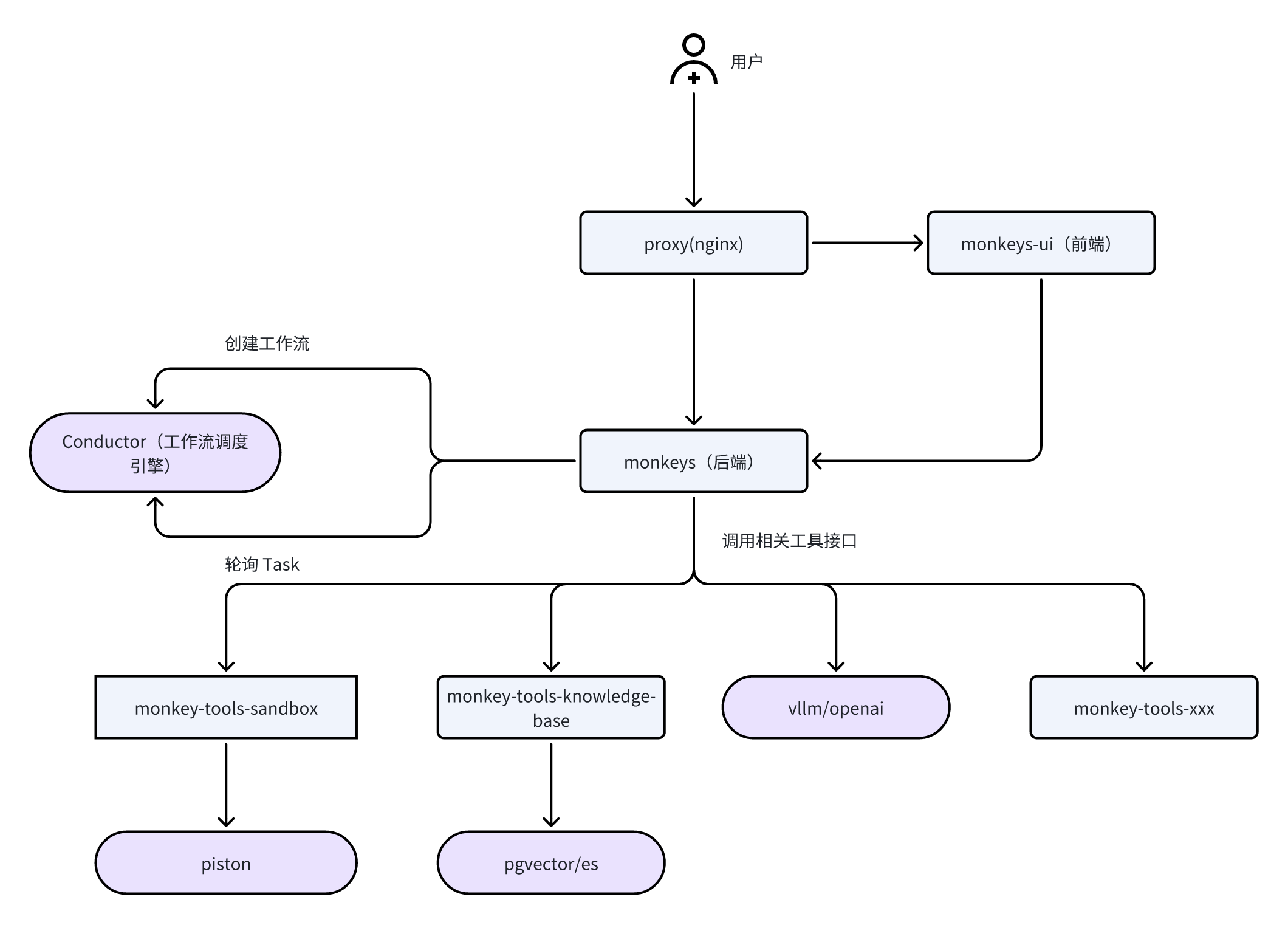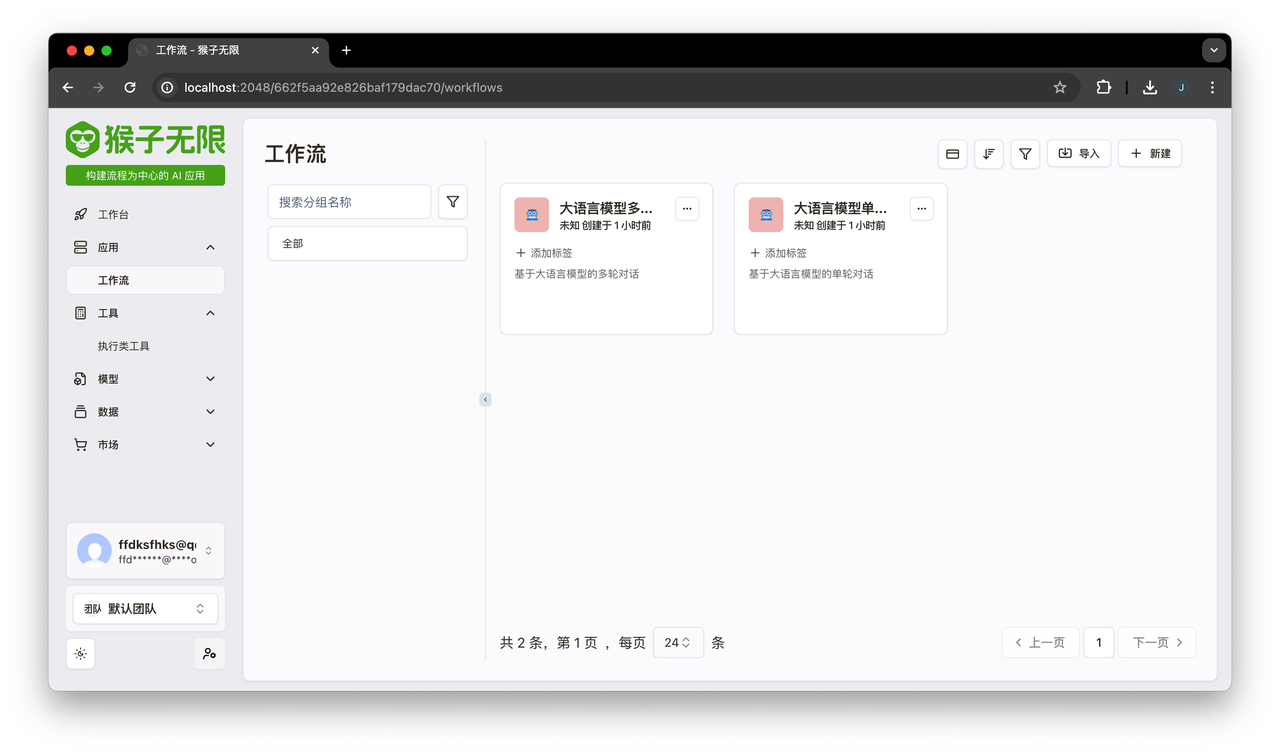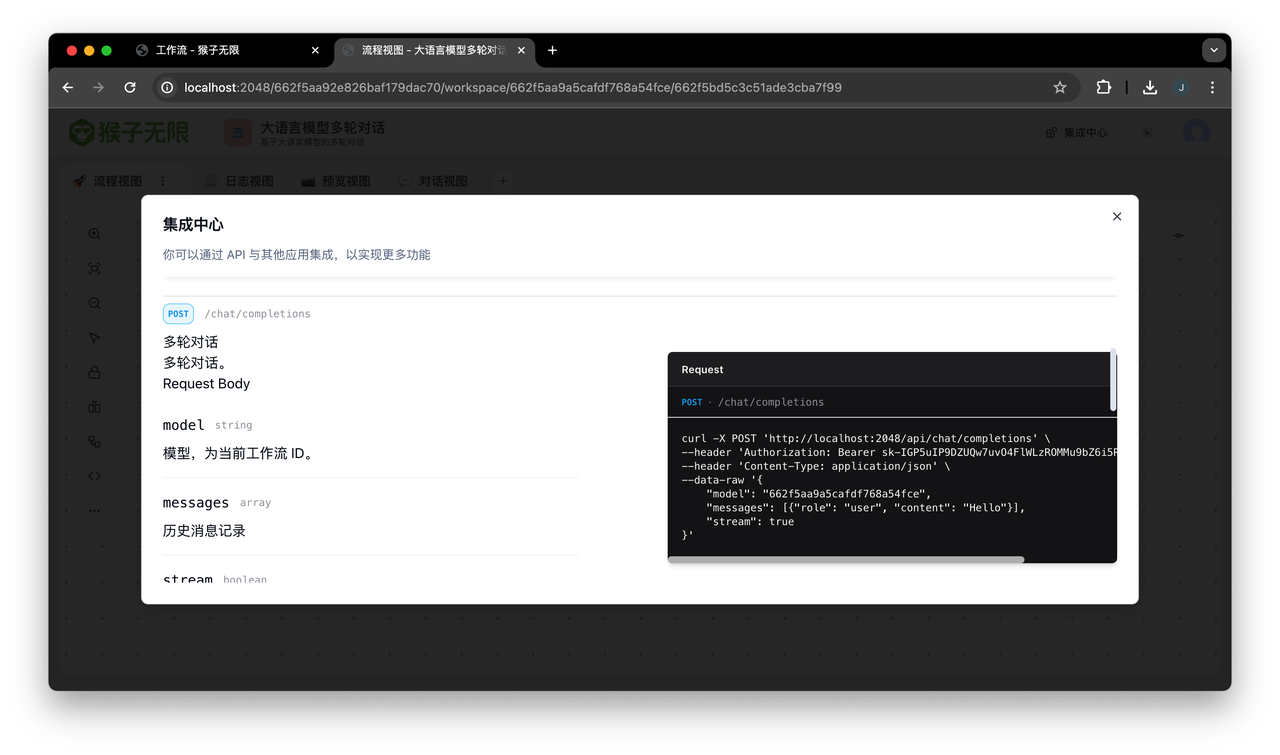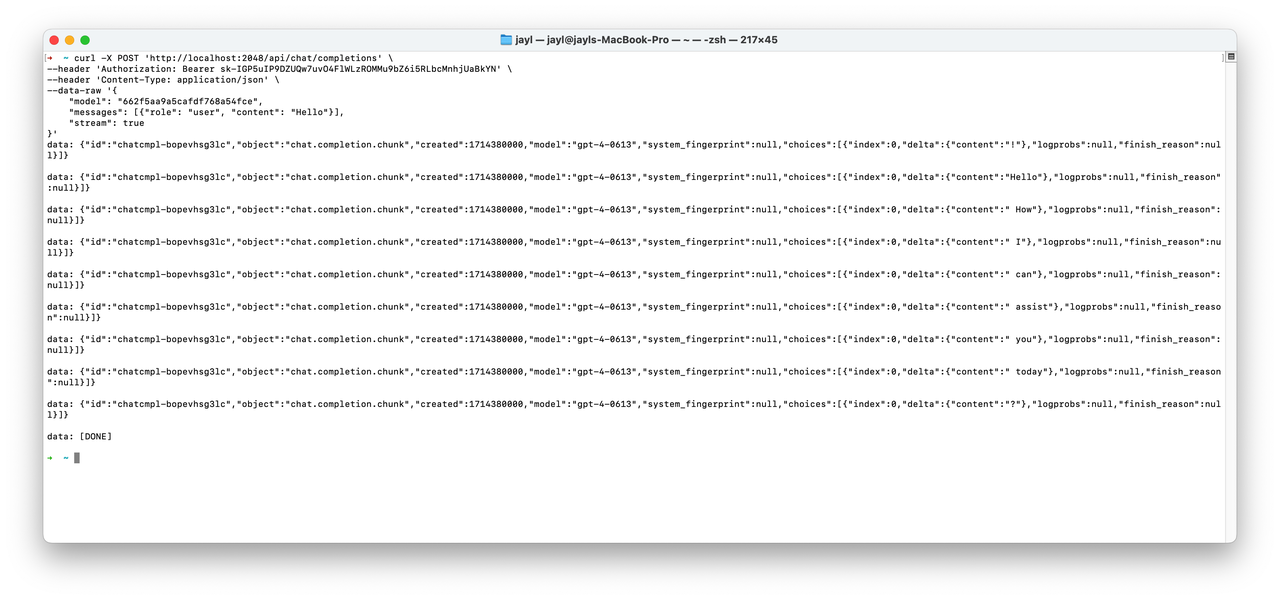Using Helm Chart for One-Click Installation
Deployment Architecture

Resource List
Helm Chart Files
| Type | Last Updated | Link |
|---|---|---|
| Online | - | https://github.com/inf-monkeys/helm-charts |
Docker Image Addresses
Provides both compressed package and online Docker Hub versions. The compressed package version is used for deployment in offline environments. Note: Replace the OSS address in the compressed package version with the latest Tag. Check the corresponding DockerHub address for the latest tag.
monkeys-multi-tenancy is the multi-tenant version, which requires a commercial license. Unless you are our commercial partner, you should use the monkeys image in most cases.
Core Services
Various Tool Services
Python Sandbox (Optional)
Used to deploy Python Runtime in offline environments. If you are in an online environment or do not need the Python custom code feature, you can ignore this.
| Version | Download Address |
|---|---|
| 3.10.0 | https://inf-monkeys.oss-cn-beijing.aliyuncs.com/docker/monkeys/piston/python-3.10.0.tar.gz |
Deployment Steps
Step 1: Deploy Core
Core components include monkeys, monkeys-ui, and conductor, which provide core workflow capabilities and an OpenAI-compatible large language model interface.
For detailed documentation, please refer to: https://github.com/inf-monkeys/monkeys-cloud/blob/main/README_zh.md
Configuration list: https://github.com/inf-monkeys/monkeys-cloud/blob/main/CONFIGURATION_zh.md
Note:
- Nginx is used as a reverse proxy to route requests to the monkeys frontend and backend, and the monkeys-proxy service provides external services.
- Specify the address of the large language model in
Values.yamlunderserver.models.
Step 2: Deploy Tools
In the Monkeys architecture, tools are pluggable components that provide different functionalities, such as sandbox tools, knowledge base tools, image processing tools, etc. You can read this document to understand why developing custom tools is important.
For detailed deployment documentation of each tool, please refer to: https://github.com/inf-monkeys/monkeys-cloud/tree/main/helm/charts/community/tools
Step 3: Import Tools into Monkeys Console
- Enter the console and initialize an account by entering any email address.
- In the Execution Tools page, click the Import button in the upper right corner and enter the manifest address of the tools (format:
http://SERVICE_ADDRESS:SERVICE_PORT/manifest.json).

Step 4: Verify Functionality
- Each team will have two default workflows:
- Multi-turn conversation with a large language model
- Single-turn conversation with a large language model

- Enter the workflow details
- Select a model
- Configure the knowledge base context (optional)

- Click the integration center in the upper right corner to see the API usage documentation

- Copy to the command line terminal and execute:
- If it runs successfully, the functionality is normal
